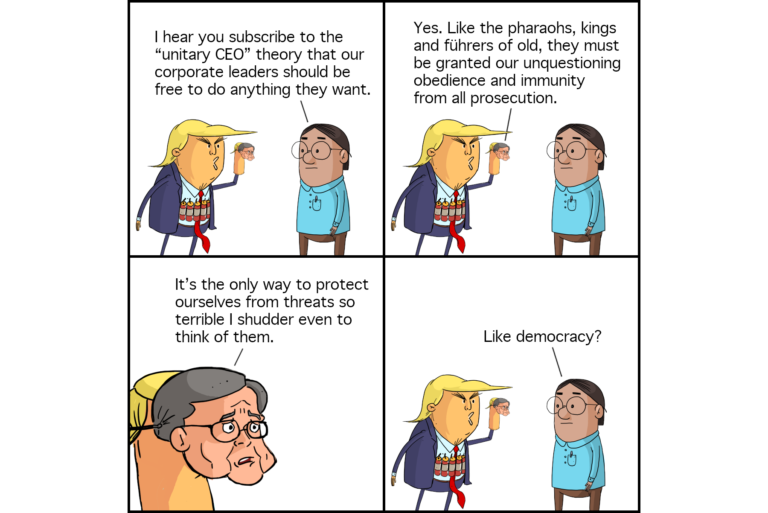Scott Adams has made a kind of parlor game out of spotting “cognitive dissonance” in critics of Donald Trump. He believes that exhibiting the “tells” of cognitive dissonance (such as long pauses) shows that a person has been confronted with facts or reasoning that have shaken their belief system, and the pause is them rallying to recover from the disruption.
I’m sure this does happen from time to time.
However, such “tells” can also simply be a sign that the person was taken aback by rudeness or stupidity or by a sequitur so non that they would need an hour just to explain to you how you went wrong. (Like if someone told you their objection to the climate change consensus was that they weren’t personally there to oversee every scientist taking a temperature reading and so they couldn’t trust those readings. How do you even begin to reply?)
As with yesterday’s strip, there are two possible interpretations of any given case of apparent cognitive dissonance, and I’m guessing that it often isn’t the one Adams thinks it is.
Here’s the very first example he gives in an old blog post he wrote to teach people how to spot the tells. Note that the “false-positive” is the conventional take that he believes he’s debunking. The “interpretation” is what he believes is really happening.
Love Interest: “Sorry I am late.”
You: “You need a good spanking.” (Said with a knowing grin, for effect.)
Love Interest: [silence that last [sic] over 5 seconds]
Interpretation: A sudden “struck dumb” silence means you reached into your love interest’s subconscious and found a powerful hidden craving.
False-positive: That’s a messed-up thing to say to a nice girl you barely know. She is wondering how to end the date early.
Cognitive dissonance indeed!

